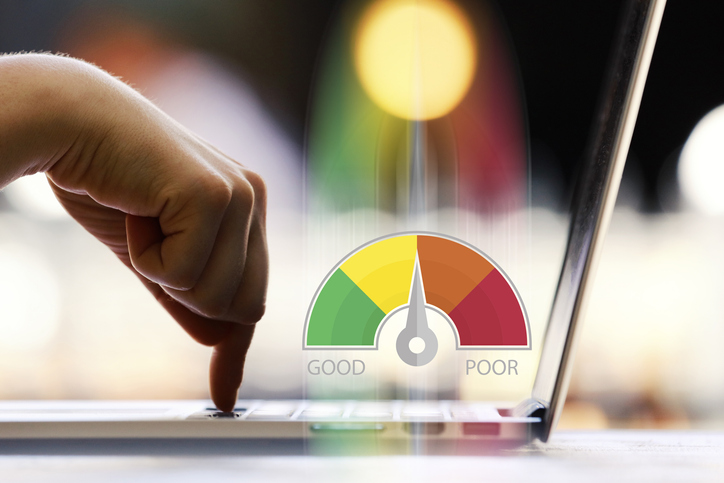
Buying a home is one of the most exciting experiences that you can have. It’s the start of what should be a wonderful new chapter in the life of you and your family. But along with the thrill of looking through potential new homes, you need to get yourself in a position to buy a house. With a mortgage pre-approval, you set yourself up for home buying success by being prepared.
Here’s everything you need to know about getting pre-approved for a mortgage in Hamilton, MT.
Table of Contents
What is a mortgage pre-approval?
A mortgage pre-approval is the process of reviewing your credit history and evaluating your financial situation. During the pre-approval process, the lender checks every aspect of your finances, from your income to your credit score. After their assessment, you will be given a letter that indicates the type of loan you qualified for and the amount you can borrow.
The contents in a pre-approval letter varies per lender. Aside from the loan type and loan amount, your pre-approval letter should also contain the interest rate, down payment amount, and validity date.
Keep in mind that pre-approval and pre-qualification mean different things. It’s easy to get confused between the two. While they are both essential to the home buying process, pre-approval holds more weight than pre-qualification.
A mortgage pre-qualification is an informal evaluation of your finances. It is a step before a mortgage pre-approval, is simpler and takes less work. Just like a mortgage pre-approval, a pre-qualification looks at your income, debt, and credit score to estimate how much you’ll be able to borrow.
A pre-approval, on the other hand, gives you home buying power. Since a lender takes a deep dive into your financial history and verifies all your financial information, you will be considered as a serious buyer. During the home buying process, the pre-approval letter is submitted along with your home offer.
If buyers just want an idea of how much house they can buy, a pre-qualification is a great way to start. Pre-qualification is for those who are not sure if they are financially ready to buy a house. But if you’re already set on homeownership, a mortgage pre-approval is required.
Benefits of a mortgage pre-approval
Obtaining a mortgage pre-approval comes with a number of advantages that will give you a leg up during the home buying process.
- It tells you how much home you can afford
Quite often, buyers find themselves falling in love with a particular home before fully realizing that it is considerably above what they can financially manage. A mortgage pre-approval helps to keep track of your spending limit. It also helps in narrowing down your options since you’ll be focusing on homes that fall within your budget.
- It puts you ahead of other buyers
One of the things that can help you stand out from other home buyers is a mortgage pre-approval letter. And if you are buying a home in a seller’s market, a pre-approval letter can make a huge difference. Sellers can see how serious you are about buying their home through your creditworthiness and the backing of your lender. A pre-approval letter is proof that you can obtain financing to purchase the home.
Some sellers only entertain offers from buyers who have home mortgage pre-approval. Buyers who have mortgage pre-approval are often prioritized, especially when it comes to home showings.
- It leaves more room for negotiations
Being a serious buyer also gives you the opportunity to negotiate with the seller. And sellers are more open to negotiate with a buyer who is fully qualified. Since the seller knows that you are serious about purchasing their home, you can ask them for certain concessions with the confidence that your proposals will be considered.
- It speed up the buying process
One of the biggest mistakes that home buyers make is skipping pre-approval at an early stage. While you will have one less step when buying a home, having that pre-approval letter in your hand will actually speed up the closing process. With the mortgage pre-approval already done, you can move on to other aspects of the closing process like the home inspection and appraisal.
Heading into a home buying transaction without mortgage pre-approval can delay your home purchase. When the time comes to apply for a mortgage, the underwriter may find discrepancies or errors and it will put a pause in your home buying process. A setback in the mortgage application gives other buyers the opportunity to jump in on the home you plan to buy.
- It gives you peace of mind
With the mortgage approval out of the way, you can now focus on the other aspects of the home buying process. You can easily shop for homes with your budget in mind and you have more leverage during negotiations with the seller.
How to get pre-approved for a mortgage in Hamilton, MT
It only takes a few simple steps to prepare and get pre-approved for a mortgage.
- Know your credit score

A credit score is essential to qualifying for a loan. This number, which ranges from 300 to 850, shows your creditworthiness and your ability to pay your loans on time. A credit score that falls between 580 to 669 is considered as fair. Credit scores that are 700 and above are very good while a credit score of 800 and above is excellent. The higher the credit score, the more confidence the lender has in the borrower.
Your credit score is largely based on your payment history, including any late or missed payments. Credit cards, installment loans, mortgages, and other credit products are just some of the factors that affect your credit score. If your credit score isn’t as high as it should be, don’t be discouraged! There are several ways to improve your score like paying your bills on time, refraining from applying for new credit, and fixing any errors in your credit report.
Aside from your credit score, your credit history is also a factor in your pre-approval application. As mentioned earlier, it’s important to evaluate your credit report and look out for any inaccuracies that may affect your score. Checking your credit history is free of charge every 12 months. As per federal law, individuals are entitled to a copy of their credit report from three national credit bureaus: Experian, Equifax, and TransUnion. However, keep in mind that free credit reports don’t include your credit score.
- Calculate your debt-to-income ratio
Your debt-to-income ratio is the percentage of your monthly debt payments that is divided by your gross monthly income. Lenders want to see how you manage your monthly payments, including your ability to repay a loan. Borrowers with higher DTI ratios are considered as riskier borrowers because they might have difficulty with the monthly payments.
The best way to calculate your DTI is to list down all your monthly payments. Credit card payments, rent payments, auto loans, student loans, and personal loans are some of the important payments that you’ll need to take note of. Once you add up all your monthly debt, divide it by your monthly income.
A good DTI ratio should be at 36% or lower. Borrowers who have a 43% DTI can still qualify for a mortgage, however, lenders generally do not accept borrowers who go over this percentage.
-
Prepare the necessary documents
There are a number of important documents that the lender will need to verify your financial information. Although the majority of these documents are the same for all borrowers, some of the documents you’ll need depend on the lender and the type of loan you plan to get.
-
Valid identification – Whether it’s your state-issued driver’s license or passport, your form of personal identification must be issued by the government and it must have your photo. Any state or federal-issued ID will do.
-
Bank statements – Lenders want to see if you have sufficient finances to cover the expenses of purchasing a home such as the down payment and closing costs. Your lender will need at least two months worth statements from the accounts you will use for your home purchase.
-
Most recent pay stubs – Lenders also require proof of employment and your most recent payroll stubs. Home buyers who are self-employed, which includes freelancers, independent contractors, and sole proprietors, must submit their profit and loss statement.
-
Tax documents – The W-2 Form, which is your Wage and Tax Statement, indicates the amount of taxes that was withheld from your paycheck. You can get your W-2 Form from your employer or you can order a copy from the IRS.
-
Social security card – Another form of identification, your lender will need this when requesting for your credit report.
-
Monthly debt payments – Lenders look at your payment obligations and your gross monthly income to determine your debt-to-income ratio.
Other documents that may be requested by your lender are proof of real estate income, records of rent payments (including the contact information of your landlord), and down payment gift letters.
-
- Fill out a mortgage loan application form
Once you have all your documents ready, complete a loan application form and input your personal, financial, and loan information. Depending on your chosen lender, your loan application can be processed by phone, online, or in person. Remember that a pre-approval application isn’t a formal application for a mortgage loan. The information that you provide will just be used to determine how much you can borrow.
As soon as you receive your home mortgage pre-approval letter, you can begin shopping for a home!
Frequently asked questions about mortgage pre-approval
-
When should I start the pre-approval process?
The best time to get a mortgage pre-approval is before the house hunting process. As mentioned previously, a pre-approval gives you a budget that you can stick to and it makes the home buying process much faster once you’ve already set your sights on a particular home. When you start the pre-approval process early, you can take care of any credit errors or issues that arise as well.
- How many mortgage lenders should I apply to?
There’s no harm in talking to different lenders and shopping around for a mortgage pre-approval. Getting more than one pre-approval letter allows you to compare your options and choose the one with the best deal. With a mortgage pre-approval, you’re also not bound to the lender that has given the pre-approval letter.
According to NerdWallet, if a buyer compared the rates offered by five lenders, they could save around $430 in interest during their first year of owning a home.
-
Will a pre-approval affect my credit score?
During your pre-approval application, your lender will request for a credit check to review your credit report and credit score. Since this is considered as a hard inquiry, your credit score may drop by a few points. But don’t be alarmed. This will not affect your credit score significantly and it won’t reflect on your credit report anymore after two years.
-
How long does a mortgage pre-approval last?
Once you receive your pre-approval letter, the validity will last for around 30 to 90 days, depending on your lender. When your pre-approval letter runs past the validity period, you will need to contact your lender and apply for a new one.
But since your lender will make another hard inquiry on your credit, your credit score may decrease by a couple of points. That’s why it’s important to keep searching for the right home before your home mortgage pre-approval expires. You really don’t want to keep chipping away at your credit score with too many hard inquiries.
- How soon will I receive my pre-approval letter?
It can take a few days to a few weeks before you receive your mortgage pre-approval letter. Having all the necessary documents and quickly answering any questions asked by your lender also makes the pre-approval process much faster.
- How much is a mortgage pre-approval?
Mortgage pre-approvals are typically free of charge. You may also find some lenders who charge an application fee. While these fees may cost around $300 to $400, they are usually credited back if you continue to work with the same lender. If you’re not comfortable with spending for the application fee, search for lenders that offer free pre-approvals instead.
-
Does a pre-approval guarantee a loan?
A home mortgage pre-approval isn’t the same as getting an actual mortgage. Having the letter doesn’t automatically guarantee a loan because your financial situation may have changed by the time you’re set on a particular house. However, getting pre-approved is still a good decision as it streamlines the home buying process.
When you get your pre-approval letter, make sure to maintain your current financial situation. Avoid making any major purchases, and hold off on switching jobs. It also helps to keep track of big deposits in your bank accounts. If any of these aspects do change, inform your lender right away.
- Can I switch to a different loan program?
There are different loan types that are offered to home buyers, such as conventional mortgages, fixed-rate mortgages, and FHA loans. If you’re thinking of switching to another loan program after getting pre-approved, you have to start the pre-approval process from the beginning.
Changing to a different loan program can slow down the home buying process. Before applying for a mortgage pre-approval, find the right type of mortgage loan. Talking to your lender and real estate agent can help you decide on the best mortgage for you.
-
What happens if I don’t qualify for a mortgage pre-approval?
If your home mortgage pre-approval is denied, don’t give up! Use this opportunity to learn about what you can fix in your credit report and how you can improve your credit score.
Get one step closer to homeownership

The best way to navigate the process of buying a home in Hamilton, MT is to work with a local expert like me. Having grown up in the Bitterroot Valley, I know this beautiful community inside and out. Being in a family of real estate agents has also given me the knowledge I need to help my clients achieve their real estate goals.
Let’s turn your dream of living in Hamilton, MT into a reality! Reach out to me today at 406.381.2245 or send me an email at Sold(at)LyricJohnson(dotted)com.
